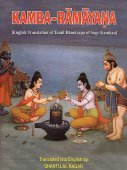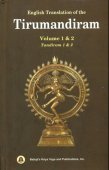Tapas, Tāpas, Tapash: 26 definitions
Introduction:
Tapas means something in Buddhism, Pali, Hinduism, Sanskrit, Jainism, Prakrit, Hindi. If you want to know the exact meaning, history, etymology or English translation of this term then check out the descriptions on this page. Add your comment or reference to a book if you want to contribute to this summary article.
Images (photo gallery)
In Hinduism
Ayurveda (science of life)
Source: archive.org: Sushruta samhita, Volume ITapas (तपस्).—According to the Suśruta-saṃhitā sūtrasthāna chapter 5.—The two months known as Tapas and Tapasya (Magha and Phalguna) constitute the season of winter.
Source: gurumukhi.ru: Ayurveda glossary of termsTapas (तपस्):—Penance, the undergoing of religious austerities, the practice of self denial and of meditation and mental concentration helpful to self-denial.

Āyurveda (आयुर्वेद, ayurveda) is a branch of Indian science dealing with medicine, herbalism, taxology, anatomy, surgery, alchemy and related topics. Traditional practice of Āyurveda in ancient India dates back to at least the first millenium BC. Literature is commonly written in Sanskrit using various poetic metres.
Vaishnavism (Vaishava dharma)
Source: Pure Bhakti: Brhad BhagavatamrtamTapas (तपस्) refers to:—Asceticism, austerity. (cf. Glossary page from Śrī Bṛhad-bhāgavatāmṛta).

Vaishnava (वैष्णव, vaiṣṇava) or vaishnavism (vaiṣṇavism) represents a tradition of Hinduism worshipping Vishnu as the supreme Lord. Similar to the Shaktism and Shaivism traditions, Vaishnavism also developed as an individual movement, famous for its exposition of the dashavatara (‘ten avatars of Vishnu’).
Shaktism (Shakta philosophy)
Source: ORA: Amanaska (king of all yogas): (shaktism)Tapas (तपस्) refers to “ascetic practices”, according to the 17th century Kaulagajamardana (“crushing the Kaula elephant”) authored by Kāśīnātha or Kṛṣṇānandācala.—Accordingly, [as Īśvara said to Pārvatī]: “[...] [Now,] my dear, hear about the Kāpālika. He eats from a skull bowl and is addicted to wine and flesh; he neglects the disciplines of purification and he is adorned with a bald head and Mālās; he eats from the fires of the cremation ground; he alone is a Kāpālika, he never does [the proper] repetition of Mantras, nor ascetic practices (tapas) nor [follows] the rules of personal restraint. He is without such [rituals] as bathing and ceremonies for donation. [Thus,] he is proclaimed a Pāṣānḍa. [...]”

Shakta (शाक्त, śākta) or Shaktism (śāktism) represents a tradition of Hinduism where the Goddess (Devi) is revered and worshipped. Shakta literature includes a range of scriptures, including various Agamas and Tantras, although its roots may be traced back to the Vedas.
Shaivism (Shaiva philosophy)
Source: HAL: The function of the Vṛṣasārasaṃgraha in the Śivadharma corpusTapas (तपस्) refers to “(religious) austerities”, according to the Vṛṣasārasaṃgraha: A Sanskrit text of twenty-four chapters contained in the Śivadharma corpus dealing with Dharma (religious duties).—Accordingly, [while discussing the Śivāṇḍa in verse 2.16]: “There is no recitation there or daily rituals, nobody performs the fire sacrifices and there is no sacrificer. There are neither religious observances, nor austerities (tapas). And there no ‘animal hell’ [or: ‘neither animal existence nor hell’]”.

Shaiva (शैव, śaiva) or Shaivism (śaivism) represents a tradition of Hinduism worshiping Shiva as the supreme being. Closely related to Shaktism, Shaiva literature includes a range of scriptures, including Tantras, while the root of this tradition may be traced back to the ancient Vedas.
General definition (in Hinduism)
Source: WikiPedia: HinduismTapas (तपस्) means deep meditation, effort to achieve self-realization, sometimes involving solitude, hermitism or asceticism; it is derived from the word root tap (तप् or ताप) which depending on context means "heat" from fire or weather, or blaze, burn, shine, penance, pain, suffering, mortification.
In vedic literature of Hinduism, fusion words based on tapas are widely used to expound several spiritual concepts that develop through heat or inner energy, such as meditation, any process to reach special observations and insights, the spiritual ecstasy of a yogin or tāpasa (a Vriddhi derivative meaning "a practitioner of austerities, an ascetic"), even warmth of sexual intimacy.
In the yogic tradition it is the fire that burns within that is needed for the sanyasi to achieve the very difficult goal of enlightenment, to foster self-control, one mindedness and focus, simplicity, wisdom, integrity. It is used to develop and discipline the body, mind and character; control of mind; satisfaction of all desires - through discipline of body, correct speech, telling only the truth, correct thought, non violence, correct action, love for all, devotion to God, developing the ability to remain tranquil and balanced in every situation, act without any selfish motive or thought of reward, with an unshakable faith in God.
In Buddhism
Theravada (major branch of Buddhism)
Source: Access to Insight: A Glossary of Pali and Buddhist TermsThe purifying "heat" of meditative practice.Theravāda is a major branch of Buddhism having the the Pali canon (tipitaka) as their canonical literature, which includes the vinaya-pitaka (monastic rules), the sutta-pitaka (Buddhist sermons) and the abhidhamma-pitaka (philosophy and psychology).
In Jainism
Jain philosophy
Source: archive.org: Anekanta Jaya Pataka of Haribhadra SuriTapas (तपस्) refers to “austerity”, as mentioned in the Anekāntajayapatākā-prakaraṇa, a Śvetāmbara Jain philosophical work written by Haribhadra Sūri.—[Cf. Vol. II, P. 218, l. 11 & p. 219, ll. 3-5]—These define what ‘tapas’ (austerity) is according to Jainism. The Bauddha allegations against the Jaina view about austerity and their refutations are dealt with by Gandhahastin Siddhasena Gani in his commentary (Vol. II, pp. 242-248) on Tattvārthasūtra (IX, 19). This topic is dealt with, in Sanskrit in Aṣṭaka (XI), Tarkarahasyadīpikā (pp. 78a, 79a and 79b) and in Jinapati’s commentary (pp. 133a-135b) on Pañcaliṅgī, in Pāiya (Prakrit) in Pañcavatthu (847-864) and in Gujurati in Ārhata darśana dīpikā (pp. 1111-1115). [...] The Jaina and non-Jaina views about tapas and its different interpretations are dealt with by Jayantilal Acharya in his Gujurati article ‘tapas’ no vikāsakram published in two installments in “Buddhiprakāśa” (Vol. 83, No. 4, pp. 379-394 & Vol. 84, No. 1, pp. 66-76). [...] Austerity (tapas) is of two varieties external and internal, and each of them has again six sub-varieties. For then names see p 225, 11 19-22, and for their explanation see The Jaina Religion and Literature (Vol II, Ch XX).
-
General definition (in Jainism)
Source: Wisdom Library: JainismTapas (तपस्, “penance”) represents one of the seven types of prāyaścitta (‘expiation’). Prāyaścitta means ‘purification’ of from the flaws or transmigressions.
Tapas is a Sanskrit technical term defined in the Tattvārthasūtra (ancient authorative Jain scripture) from the 2nd century, which contains aphorisms dealing with philosophy and the nature of reality.
Source: archive.org: Jaina YogaTapas (तपस्, “ascetic practices”) as in tapas-mada refers to “pride in one’s ascetic practices” and represents one of the eight forms of vainglory (mada), according to Samantabhadra in his Ratna-Karaṇḍa-śrāvakācāra (with commentary of Prabhācandra). These eight madas are included in the twenty-five blemishes (dṛg-doṣas), which are generally held to be the eight madas, the three mūḍhatās, the six anāyatanas, and the eight doṣas.
Source: archive.org: Trisastisalakapurusacaritra1) Tapas (तपस्, “penance”) refers to one of the four divisions of dharma, according to chapter 1.1 [ādīśvara-caritra] of Hemacandra’s 11th century Triṣaṣṭiśalākāpuruṣacaritra: an ancient Sanskrit epic poem narrating the history and legends of sixty-three illustrious persons in Jainism. Accordingly, in the sermon of Sūri Dharmaghoṣa:—“[...] Dharma is so-called from supporting creatures who have fallen into a bad condition of existence. It is fourfold with the divisions of liberality (dāna), good conduct (śīla), penance (tapas), and state of mind (bhāva)”.
That is called penance (tapas) that burns away karma. Outer penance is fasting, etc., and inner is confession and penance, etc. Fasting (anaśana), partial fasting (aunodarya), limitation of food (vṛtteḥ. saṃksepaṇa), giving up choice food (rasatyāga), bodily austerities (anukleśa), and avoidance of all useless motion (līnatā) are, called outer penance. Confession and penance (prayaścitta), service to others (vaiyāvṛtta), study of sacred texts (svādhyāya), reverence (vinaya), indifference to the body (vyutsarga), good meditation (śubhadhyāna) are the sixfold inner penance.
2) Tapas (तपस्, “penance”) refers to one of the ten-fold dharma (i.e., Yatidharma) capable of leading across saṃsāra, according to chapter 3.3.—Accordingly, as Sumatinātha said, “The sources of pride—youth, power, beauty, etc.—have become subdued from penance, like evil spirits of a sorceror reduced to servitude from the power to summon them. Yatidharma, handed down orally by the Blessed Ones, is the best boat without impediments for crossing the ocean of saṃsāra. [...] Austerities (tapas) are twofold, outer and inner, as follows: complete fasting, partial fasting, limitation of food, giving up choice food, bodily austerities, and avoidance of unnecessary motion are called outer austerities; confession and penance, service to others, study (of sacred texts), reverence, indifference to the body (vyutsarga=kāyotsarga), pure meditation are the six inner austerities. [...] So the ten-fold dharma, like a spotless wishing-jewel, capable of leading across saṃsāra, is attained in the world by merit”.
Source: Encyclopedia of Jainism: Tattvartha Sutra 9: Influx of karmasTapas (तपस्).—What is meant by penance-expiation (tapas-prāyaścitta)? Observing fast and other types of external austerities for purification of the flaws committed is called penance-expiation.
Source: Encyclopedia of Jainism: Tattvartha Sutra 3: The Lower and middle worldsTapas (तपस्, “austerity”) or Tapariddhi refers to “the capability to observe hard and difficult penances” and represents one of the eight types of ṛddhi (extraordinary powers), that can be obtained by the Ārya (civilized people): one of the two classes of human beings, according to the 2nd-century Tattvārthasūtra 3.46.—Some ascetics attain extraordinary powers to produce worldly miracles. Such attainments are called ṛddhi. There are eight types of such extraordinary powers (e.g., Tapas).
Tapas-ṛddhi (extraordinary power of austerity) is of seven types namely:
- conquering afflictions (ghora-riddhi),
- observing long fasts (mahat-riddhi),
- severe penance (ugratapa-riddhi),
- retaining aura (dīptī-riddhi),
- digestive (atapa-riddhi),
- extreme penance (ghoraguṇa-riddhi),
- severe celibacy (ghorabrahmacarya-riddhi).
Tapas (तपस्) refers to “austerities”, according to Pūjyapāda’s Sarvārthasiddhi.—Accordingly, “[...] Even with renunciation of worldly pleasures, meditation accompanied by austerities (tapas-bhāvana), propagation of true faith, and auspicious death are rare. If these are achieved, then the attainment of enlightenment has borne fruit. By contemplating on the difficulty in attaining true faith, one does not become negligent after attaining this rare jewel”.

Jainism is an Indian religion of Dharma whose doctrine revolves around harmlessness (ahimsa) towards every living being. The two major branches (Digambara and Svetambara) of Jainism stimulate self-control (or, shramana, ‘self-reliance’) and spiritual development through a path of peace for the soul to progess to the ultimate goal.
Languages of India and abroad
Sanskrit dictionary
Source: DDSA: The practical Sanskrit-English dictionaryTapas (तपस्).—n. [tap-asun]
1) Warmth, heat, fire, light; एकः सूर्यस्तपसो योनिरेका (ekaḥ sūryastapaso yonirekā) Mahābhārata (Bombay) 12.351.1.
2) Pain, suffering; न तपः कुतश्चन (na tapaḥ kutaścana) Ṛgveda 7.82.7.
3) Penance, religious austerity, mortification; तपः किलेदं तदवाप्तिसाधनम् (tapaḥ kiledaṃ tadavāptisādhanam) Kumārasambhava 5.64.
4) Meditation connected with the practice of personal self-denial or bodily mortification; गीरा वाऽऽशंसामि तपसा ह्यनन्तौ (gīrā vā''śaṃsāmi tapasā hyanantau) Mahābhārata (Bombay) 1.3.57.; Bhāgavata 12.11.24.
5) Moral virtue, merit.
6) Special duty or observance (of any particular caste); यत्सप्तान्नानि मेधया तपसाजनयत्पिता (yatsaptānnāni medhayā tapasājanayatpitā) Bṛ. Up. 1.5.1.
7) One of the seven worlds; i. e. the region above the world called जनस् (janas).
8) The month of religious austerities.
9) A long period of time, Kalpa.
1) (In astrol.) The ninth lunar mansion.
11) Chastisement (daṇḍa); आयुः शक्तिं च कालं च निर्दिश्य तप आदिशेत् (āyuḥ śaktiṃ ca kālaṃ ca nirdiśya tapa ādiśet) Mahābhārata (Bombay) 12.267.35. -m.
1) The month of Māgha; तपसि मन्द- गभस्तिरभीषुमान् (tapasi manda- gabhastirabhīṣumān) Śiśupālavadha 6.63.
2) An epithet of Agni. -m., -n.
1) The cold season (śiśira).
2) The winter (hemanta).
3) The hot season (grīṣma).
Source: Cologne Digital Sanskrit Dictionaries: Shabda-Sagara Sanskrit-English DictionaryTapas (तपस्).—m.
(-pāḥ) 1. The name of a month, Magha, (January February.) 2. The cold or dewy season. 3. The hot season. n.
(-paḥ) 1. Religious austerity, penance, mortification, the practice of mental or personal self-denial, or the infliction of bodily tortures. 2. A world, the region above the Janaloka, inhabited by saints or devotees after death. 3. Virtue, moral merit. 4. Duty, the special observance of certain things: thus the Tapas of a Brahman is sacred learning; of a Kshetrya, the protection of subject; of a Vaisya, almsgiving to Brahmans; of a Sudra, the service of the same tribe; and of a Rishi or saint, feeding upon herbs and roots. E. tap to heat or inflame, affix asun.
Source: Cologne Digital Sanskrit Dictionaries: Benfey Sanskrit-English DictionaryTapas (तपस्).—[tap + as], n. 1. Fire, [Mānavadharmaśāstra] 6, 23. 2. Penance, mortification, religious austerity, devotion, [Mānavadharmaśāstra] 1, 33. 3. The name of a month, January
— February, [Suśruta] 1, 19, 8.
Source: Cologne Digital Sanskrit Dictionaries: Cappeller Sanskrit-English DictionaryTapas (तपस्).—[neuter] warmth, heat, ardour; pain, grief; religious austerity, penance, meditation; (*[masculine]) a cert. month or season.
Source: Cologne Digital Sanskrit Dictionaries: Monier-Williams Sanskrit-English DictionaryTapaḥ (तपः):—[from tap] in [compound] for pas.
Source: Cologne Digital Sanskrit Dictionaries: Monier-Williams Sanskrit-English Dictionary1) Tapaś (तपश्):—[from tap] in [compound] for pas.
2) Tapas (तपस्):—[from tap] n. warmth, heat (pañca tapāṃsi, the 5 fires to which a devotee exposes himself in the hot season, viz. 4 fires lighted in the four quarters and the sun burning from above, [Manu-smṛti vi, 23; Rāmāyaṇa; Bhāgavata-purāṇa iv; Brahma-purāṇa]; cf. [Raghuvaṃśa xiii, 41]), [Ṛg-veda; Atharva-veda; Vājasaneyi-saṃhitā; Śāṅkhāyana-śrauta-sūtra]
3) [v.s. ...] pain, suffering, [Ṛg-veda vii, 82, 7]
4) [v.s. ...] religious austerity, bodily mortification, penance, severe meditation, special observance (e.g. ‘sacred learning’ with Brāhmans, ‘protection of subjects’ with Kṣatriyas, ‘giving alms to Brāhmans’ with Vaiśyas, ‘service’ with Śūdras, and ‘feeding upon herbs and roots’ with Ṛṣis, [Manu-smṛti xi, 236]), [Ṛg-veda ix, 113, 2]
5) [v.s. ...] [x] (personified, [83, 2 f. & 101, 1], ‘father of Manyu’ [Ṛgveda-anukramaṇikā]), [Atharva-veda] etc.
6) [v.s. ...] (m., [cf. Lexicographers, esp. such as amarasiṃha, halāyudha, hemacandra, etc.]) Name of a month intervening between winter and spring, [Vājasaneyi-saṃhitā; Taittirīya-saṃhitā i; Śatapatha-brāhmaṇa iv; Suśruta; Pāṇini 4-4, 128], [vArttika] 2, [Patañjali; Śiśupāla-vadha vi, 63]
7) [v.s. ...] the hot season, [cf. Lexicographers, esp. such as amarasiṃha, halāyudha, hemacandra, etc. [Scholiast or Commentator]]
8) [v.s. ...] = po-loka, [Vedāntasāra 120]
9) [v.s. ...] the 9th lunar mansion (dharma), [Varāha-mihira’s Bṛhajjātaka i, 19; ix, 1 and 4]
10) [v.s. ...] Name of a Kalpa period, [Vāyu-purāṇa i, 21, 27.]
Source: Cologne Digital Sanskrit Dictionaries: Yates Sanskrit-English DictionaryTapas (तपस्):—(pāḥ) 5. n. Religious austerity; virtue, duty; Māgha (January and February); dewy or hot season; one of the Hindu heavens.
Source: DDSA: Paia-sadda-mahannavo; a comprehensive Prakrit Hindi dictionary (S)Tapas (तपस्) in the Sanskrit language is related to the Prakrit word: Tava.
[Sanskrit to German]
Sanskrit, also spelled संस्कृतम् (saṃskṛtam), is an ancient language of India commonly seen as the grandmother of the Indo-European language family (even English!). Closely allied with Prakrit and Pali, Sanskrit is more exhaustive in both grammar and terms and has the most extensive collection of literature in the world, greatly surpassing its sister-languages Greek and Latin.
Hindi dictionary
Source: DDSA: A practical Hindi-English dictionaryTapas in Hindi refers in English to:—(nm) see [tapasvi]..—tapas (तापस) is alternatively transliterated as Tāpasa.
...
Nepali dictionary
Source: unoes: Nepali-English DictionaryTapaḥ (तपः):—n. penance; austerities;
Nepali is the primary language of the Nepalese people counting almost 20 million native speakers. The country of Nepal is situated in the Himalaya mountain range to the north of India.
See also (Relevant definitions)
Starts with (+149): Tapahkara, Tapahklesha, Tapahkrisha, Tapahpati, Tapahprabhava, Tapahpriya, Tapahsadhya, Tapahsamadhi, Tapahshakti, Tapahshila, Tapahshraddha, Tapahsthali, Tapahsthana, Tapahsuta, Tapahsvarupa, Tapakcit, Tapas kaaya, Tapas-kaaya, Tapas-kaya, Tapasa.
Ends with (+17): Abhyantaratapas, Adhyatmatapas, Adhyayanatapas, Agnitapas, Agryatapas, Amritashtamitapas, Atapas, Ataptatapas, Bahistapas, Bahyatapas, Brihattapas, Diptatapas, Dirghatapas, Ghritapas, Jnanatapas, Kashtatapas, Mahatapas, Nirupamatapas, Nitatatapas, Pancatapas.
Full-text (+566): Tapasa, Tapasya, Tapashcarya, Taptatapas, Tapahkara, Tapasvin, Atapas, Pancatapas, Taporashi, Tapahkleshasaha, Tapashcarana, Tapahsthali, Tapahkrisha, Sutapas, Tapastirtha, Tapahsamadhi, Atapaska, Tapashcitamayana, Tapovant, Surapravira.
Relevant text
Search found 153 books and stories containing Tapas, Tāpas, Tapash, Tapaś, Tapaḥ, Tapah, Taapas; (plurals include: Tapases, Tāpases, Tapashes, Tapaśs, Tapaḥs, Tapahs, Taapases). You can also click to the full overview containing English textual excerpts. Below are direct links for the most relevant articles:
Tattvartha Sutra (with commentary) (by Vijay K. Jain)
Verse 9.19 - The six kinds of external austerities (bāhya-tapas) < [Chapter 9 - Stoppage and Shedding of Karmas]
Verse 9.20 - The six kinds of internal austerities (ābhyantara-tapa) < [Chapter 9 - Stoppage and Shedding of Karmas]
Shrimad Bhagavad-gita (by Narayana Gosvami)
Verse 18.5 < [Chapter 18 - Mokṣa-yoga (the Yoga of Liberation)]
Verse 7.9 < [Chapter 7 - Vijñāna-Yoga (Yoga through Realization of Transcendental Knowledge)]
Verse 17.17 < [Chapter 17 - Śraddhā-traya-vibhāga-yoga]
Garga Samhita (English) (by Danavir Goswami)
Verse 5.11.6 < [Chapter 11 - The Stories of Kubjā and Kuvalayāpīḍa]
Verse 6.8.14 < [Chapter 8 - The Marriages of All the Queens]
Verse 1.3.19 < [Chapter 3 - Description of the Lord’s Appearance]
Taittiriya Upanishad Bhashya Vartika (by R. Balasubramanian)
Verse 2.376 < [Book 2 - Brahmavallī]
Verse 3.18 < [Book 3 - Bhṛguvallī]
Verse 3.21 < [Book 3 - Bhṛguvallī]
The Markandeya Purana (by Frederick Eden Pargiter)
Mundaka Upanishad with Shankara’s Commentary (by S. Sitarama Sastri)
Verse 1.2.11 < [Mundaka I, Khanda II]
Verse 3.1.5 < [Mundaka III, Khanda I]
Verse 3.2.4 < [Mundaka III, Khanda II]
Related products
(+1 more products available)









